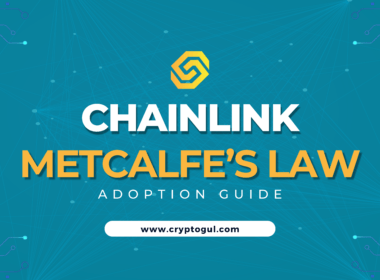In the world of blockchain and cryptocurrencies, DAOs (decentralized autonomous organizations) have become increasingly popular. Web3 DAOs are organizations that are run by code and operate on a decentralized network.
With the emergence of Web3 technology, DAOs have become even more powerful, enabling users to create and manage decentralized organizations with ease.
In this comprehensive guide, we’ll cover everything you need to know about Web3 DAOs, from their definition to their benefits, and how to create and manage them.
What are Web3 DAOs?
Web3 DAOs are decentralized autonomous organizations that operate on a blockchain. They are run by code and are designed to operate without the need for a central authority. They use smart contracts to automate decision-making processes and allow for transparent governance.
How do Web3 DAOs work?
DAOs work by using smart contracts to automate decision-making processes. Smart contracts are self-executing contracts that are coded to automatically execute when certain conditions are met. They use smart contracts to establish rules and governance, and to automate decision-making processes.
Benefits of Web3 DAOs
a. Decentralization
One of the main benefits of Web3 DAOs is decentralization. Web3 DAOs are run on a decentralized network, which means that there is no central authority controlling the organization.
b. Transparency
These organizations are transparent, which means that all transactions and decisions are recorded on the blockchain. This makes it easy for members to see how decisions are made and to hold the organization accountable.
c. Efficiency
They are efficient, as decision-making processes are automated and executed through smart contracts. This means that decisions are made quickly and efficiently, without the need for human intervention.
Types of Web3 DAOs
a. Token Curated Registries (TCRs)
Token Curated Registries (TCRs) are DAOs that are used to create lists of items. TCRs use a token to incentivize users to curate the list and ensure that only high-quality items are added.
b. Decentralized Autonomous Companies (DACs)
Decentralized Autonomous Companies (DACs) are DAOs that are designed to operate like traditional companies, but without the need for a central authority. DACs use smart contracts to automate decision-making processes and to manage assets.
c. Decentralized Autonomous Funds (DAFs)
Decentralized Autonomous Funds (DAFs) are DAOs that are used to manage assets. DAFs use smart contracts to automate investment decisions and to manage assets without the need for a central authority.
How to create and manage a Web3 DAO
a. Choosing a blockchain
The first step in creating a Web3 DAO is to choose a blockchain. Ethereum is one of the most popular blockchains for creating DAOs, but there are other blockchains that can be used as well.
b. Creating a smart contract
Once a blockchain has been chosen, the next step is to create a smart contract. Smart contracts are self-executing contracts that are coded to automatically execute when certain conditions are met. Smart contracts can be used to establish rules and governance for the Web3 DAO.
c. Establishing rules and governance
The next step is to establish rules and governance for the Web3 DAO. This can be done through the smart contract, which can be coded to automatically execute decisions based on certain conditions.
Examples of successful Web3 DAOs
a. MakerDAO
MakerDAO is a Web3 DAO that operates on the Ethereum blockchain. It is a decentralized autonomous organization that manages the stablecoin DAI.
They use smart contracts to automate decision-making processes and to manage the DAI stablecoin.
b. Uniswap
Uniswap is a Web3 DAO that operates on the Ethereum blockchain. It is a decentralized exchange that allows users to trade cryptocurrencies without the need for a central authority.
Uniswap uses smart contracts to automate decision-making processes and to manage the exchange.
c. Aragon
Aragon is a Web3 DAO that operates on the Ethereum blockchain. It is a platform that allows users to create and manage decentralized organizations.
Aragon uses smart contracts to automate decision-making processes and to manage the organization.
Challenges and limitations
Whilst they are still in their early stages, there are several challenges and limitations that need to be addressed. One of the biggest challenges is user adoption, as many users are still not familiar with Web3 technology.
Another challenge is scalability, as decentralized networks can become slow and inefficient as the number of users increases.
Future of Web3 DAOs
The future of DAOs looks promising, as more users and businesses begin to adopt this technology. The emergence of decentralized finance (DeFi) has driven the demand, this trend is likely to continue in the future.
Conclusion
DAOs are changing the way we think about organizations and governance. They offer users a new level of decentralization, transparency, and efficiency, and enable users to create and manage decentralized organizations with ease.
While there are still challenges and limitations that need to be addressed, the future looks promising.
A Web3 DAO is a decentralized autonomous organization that operates on a blockchain.
Web3 DAOs use smart contracts to automate decision-making processes and to manage assets.
The benefits of Web3 DAOs include decentralization, transparency, and efficiency.
Some types of Web3 DAOs include Token Curated Registries (TCRs), Decentralized Autonomous Companies (DAC)








